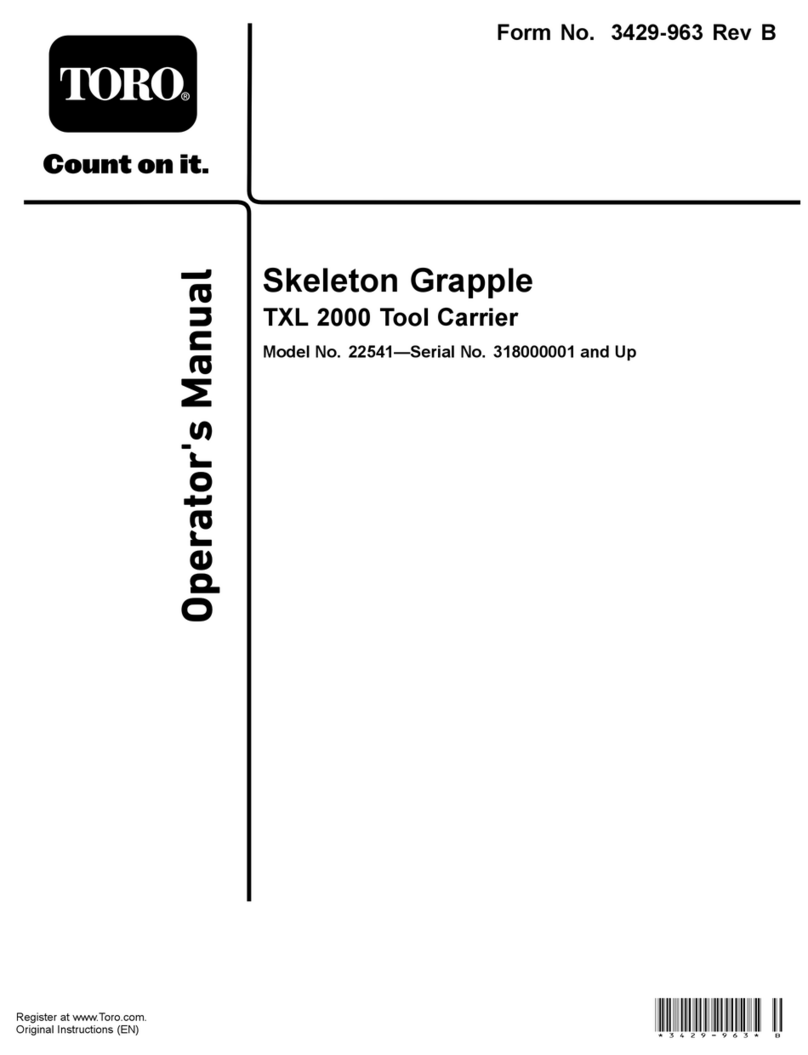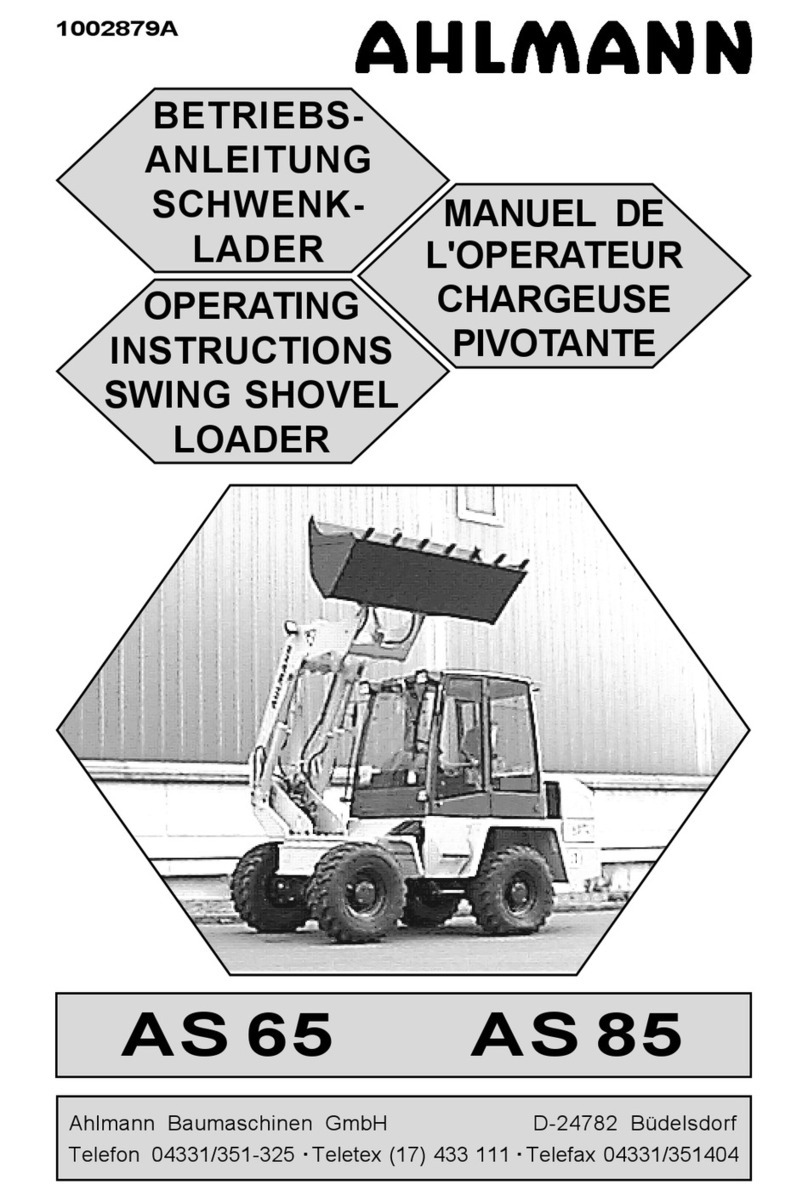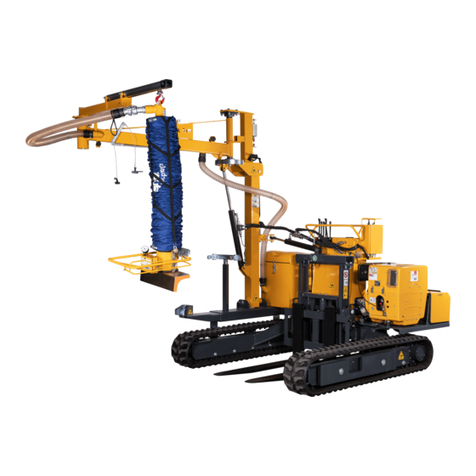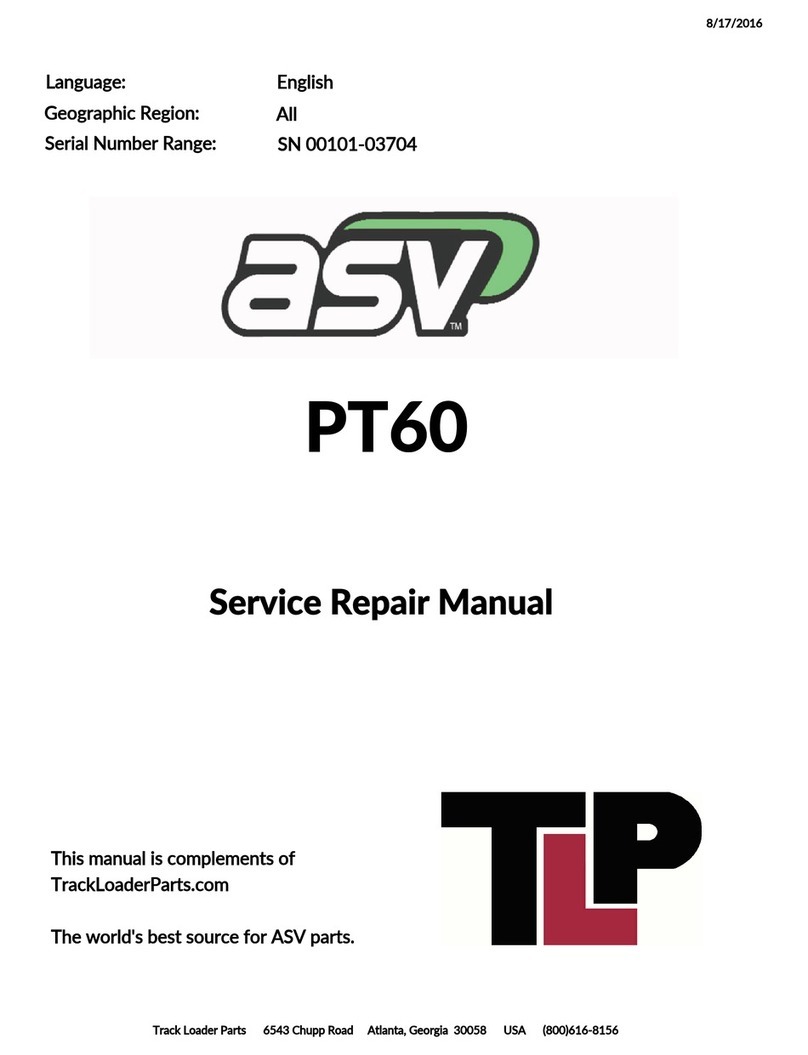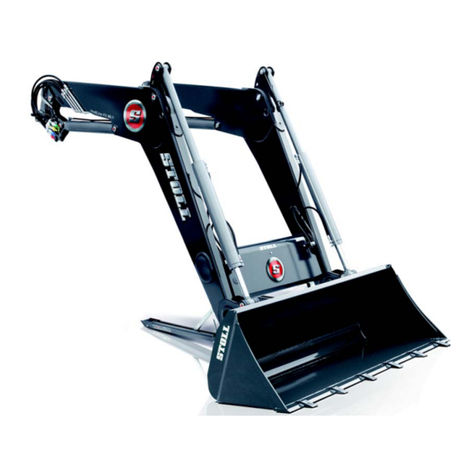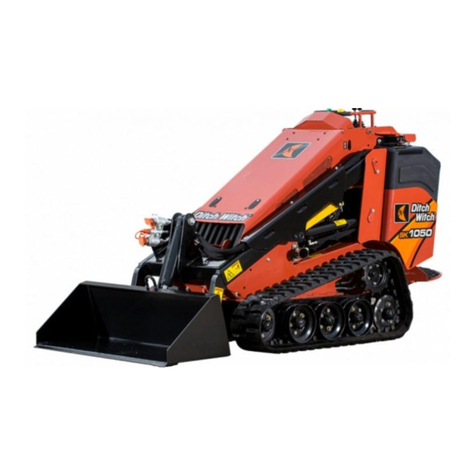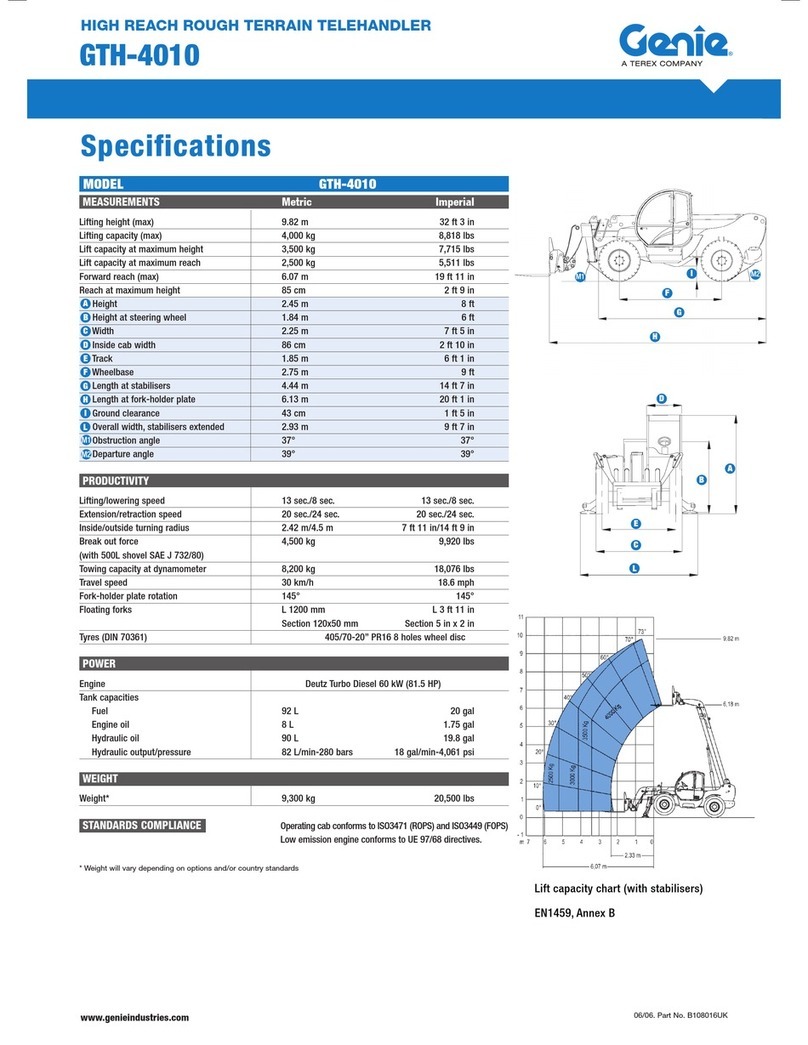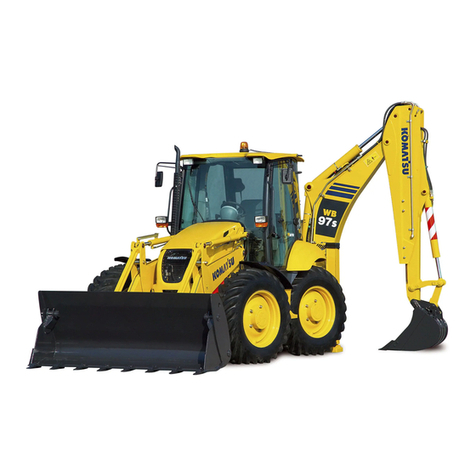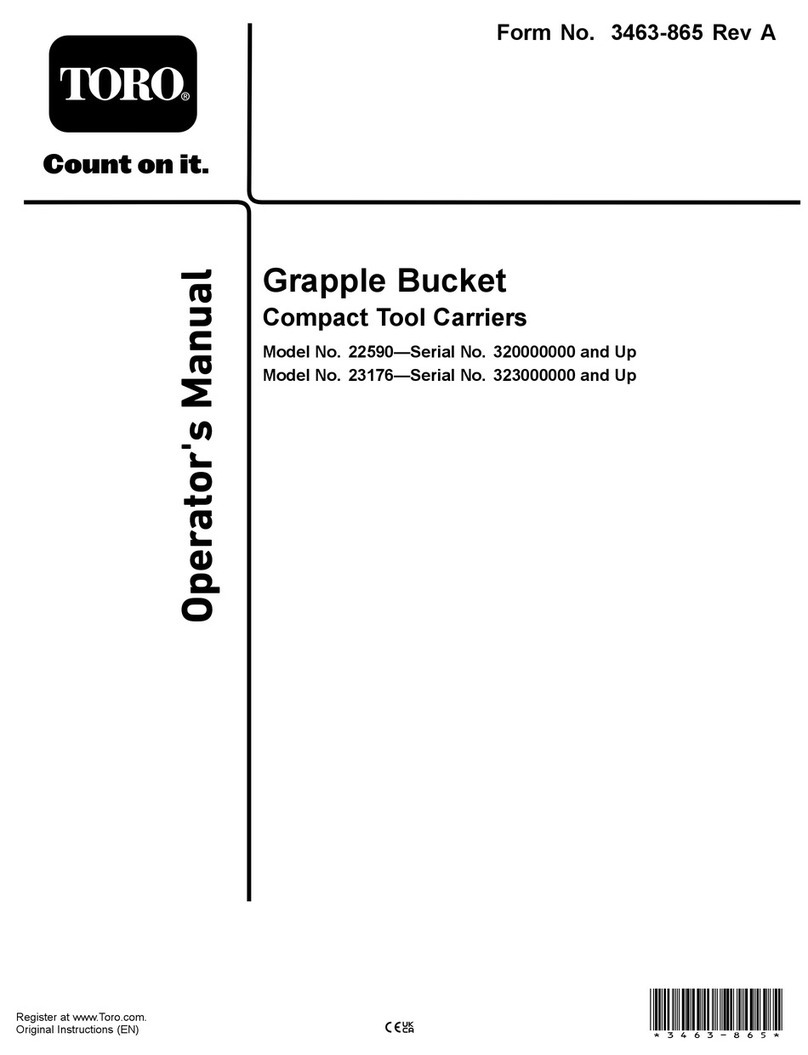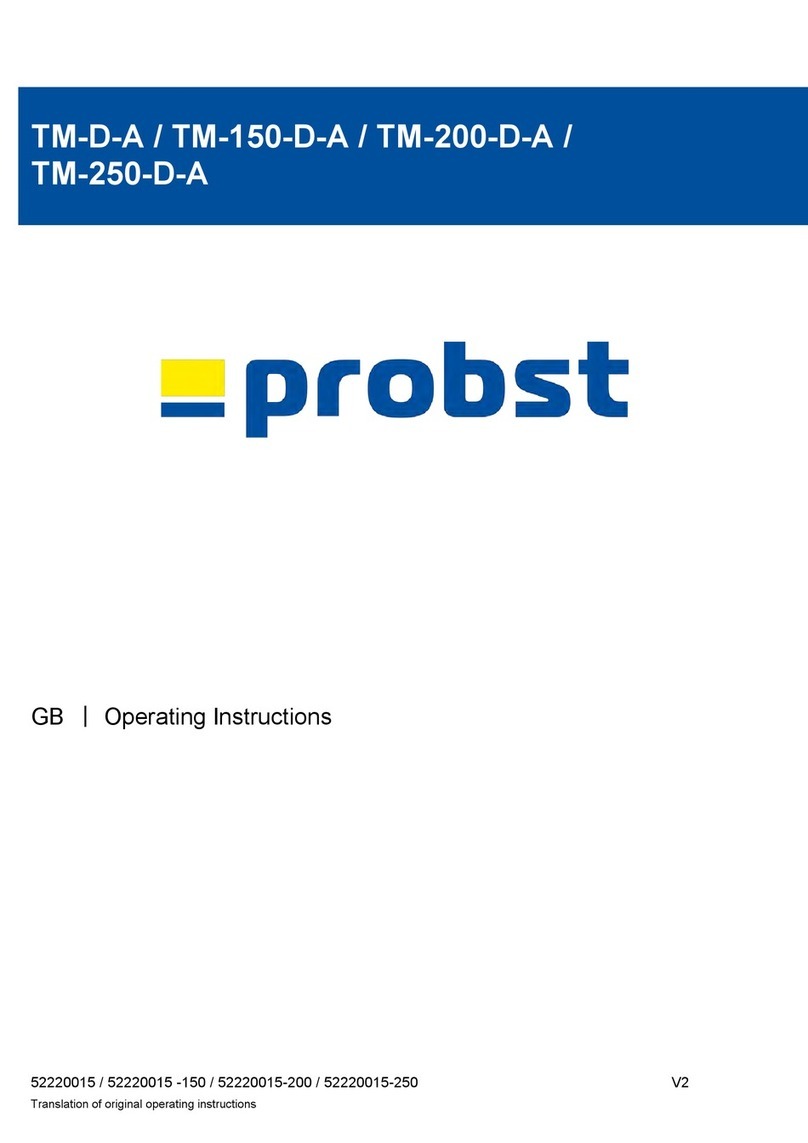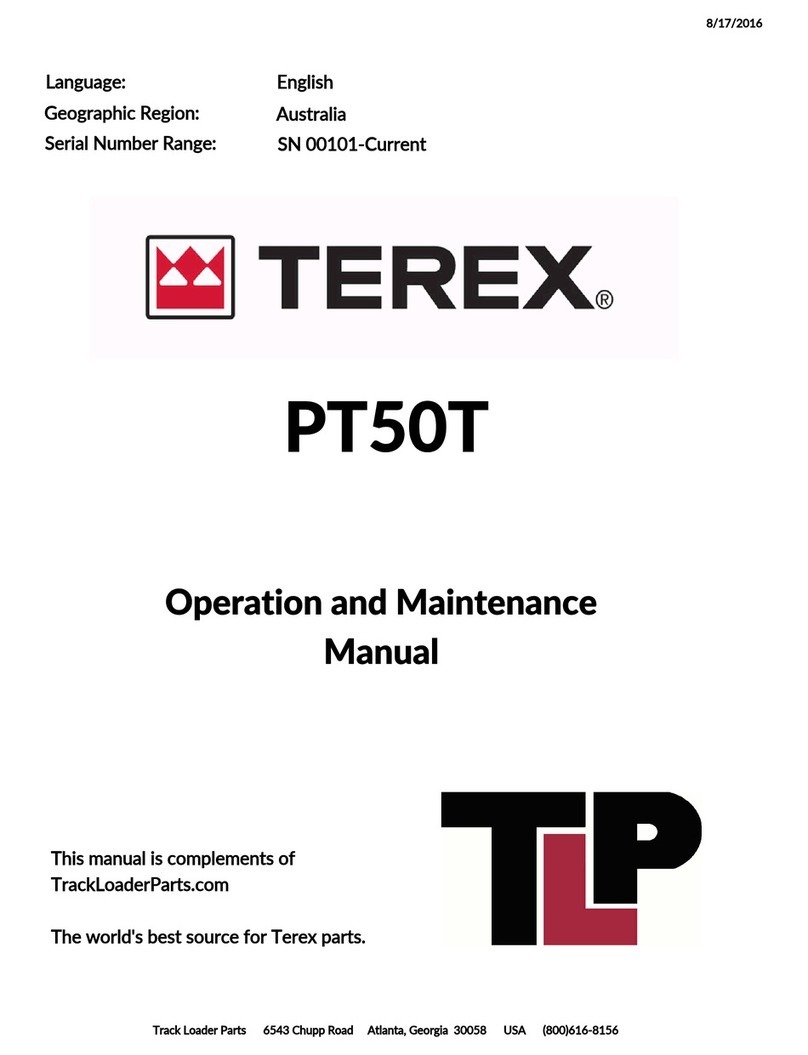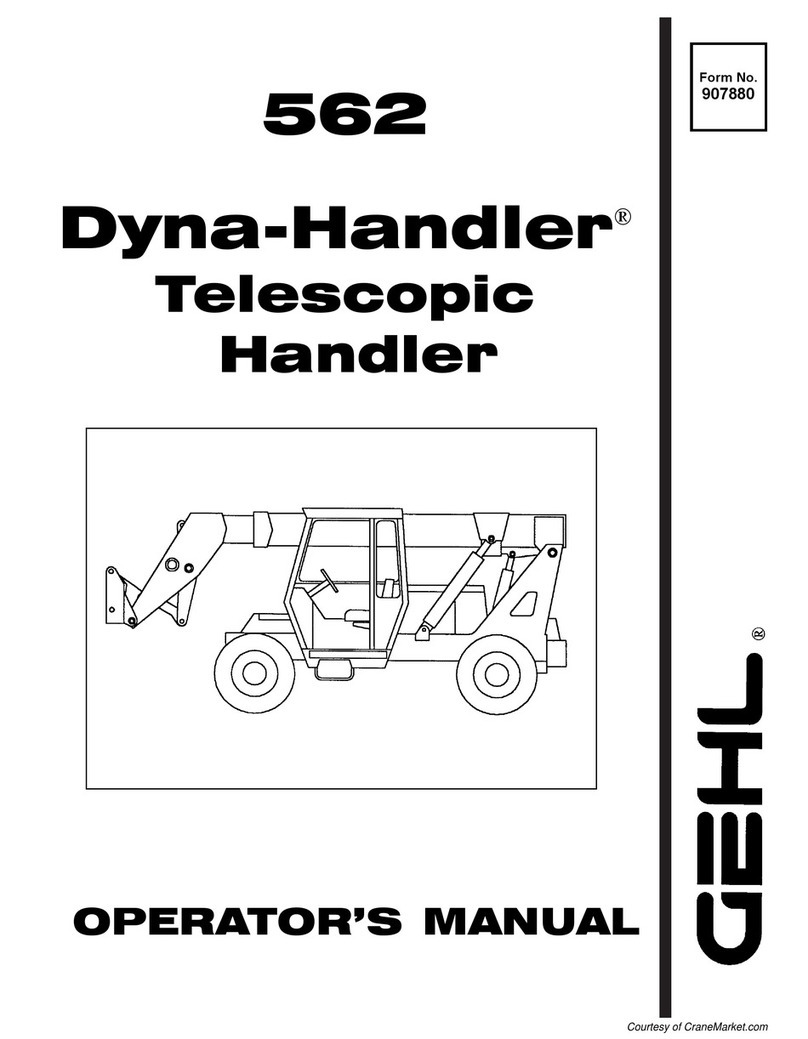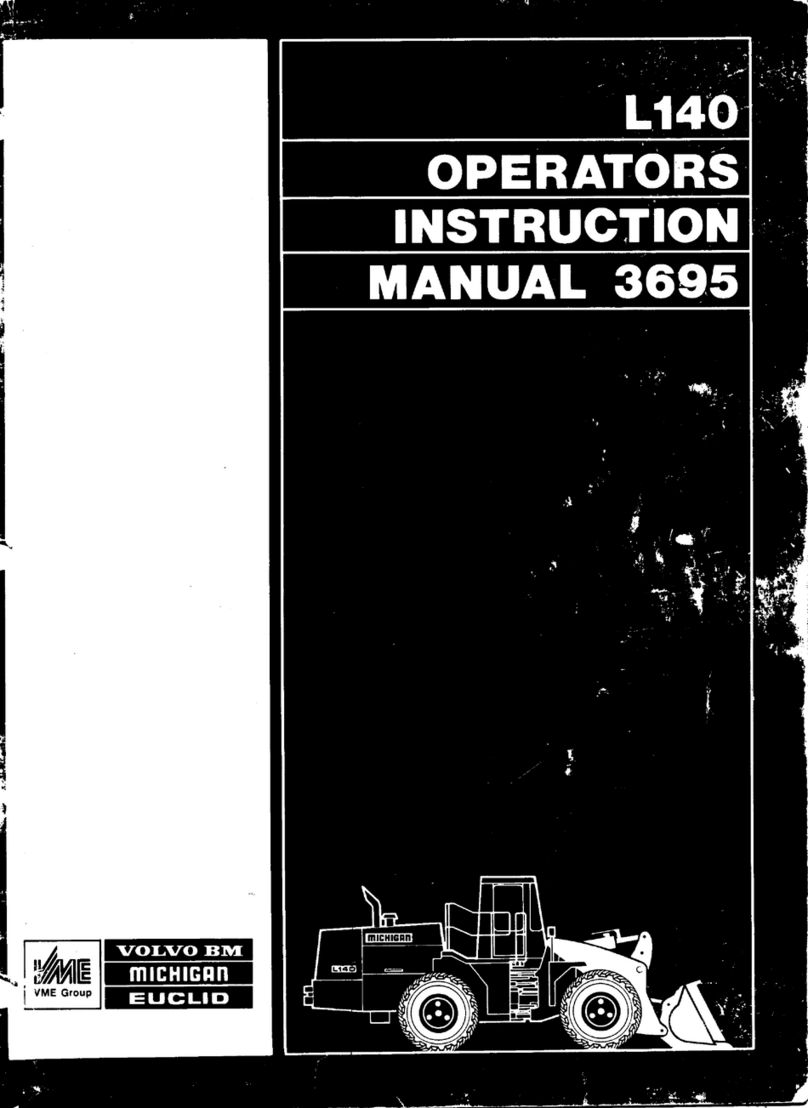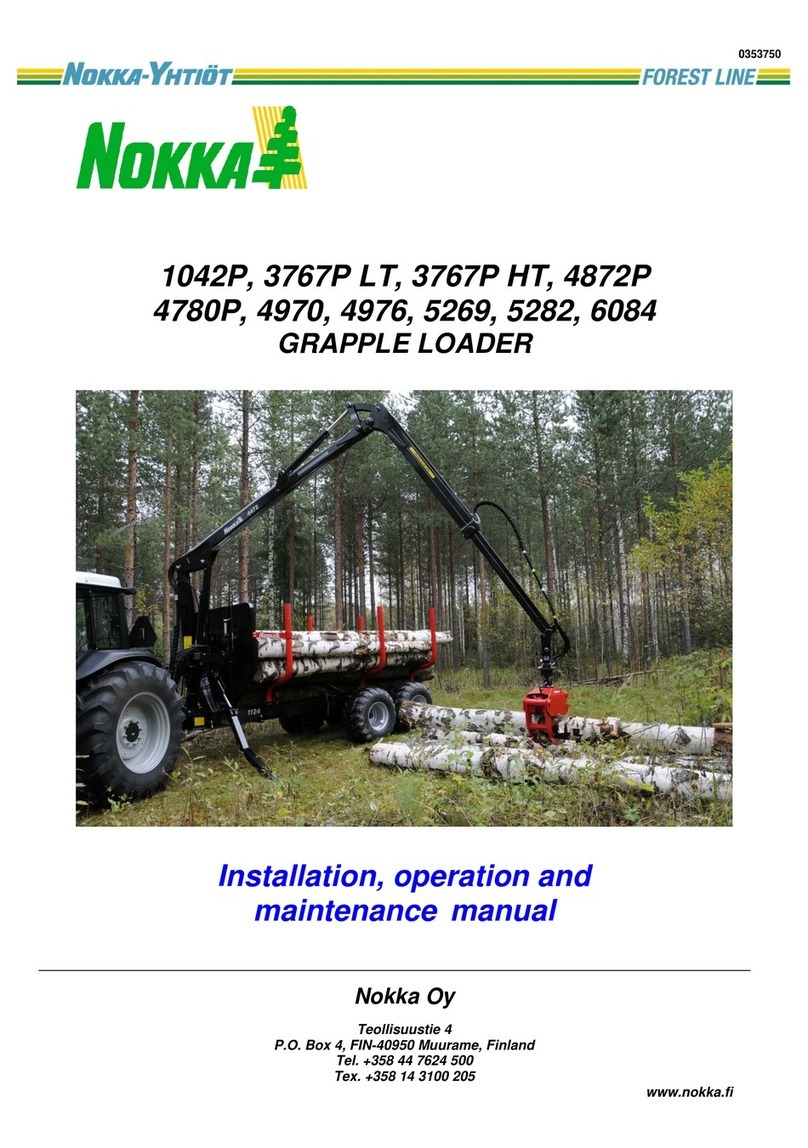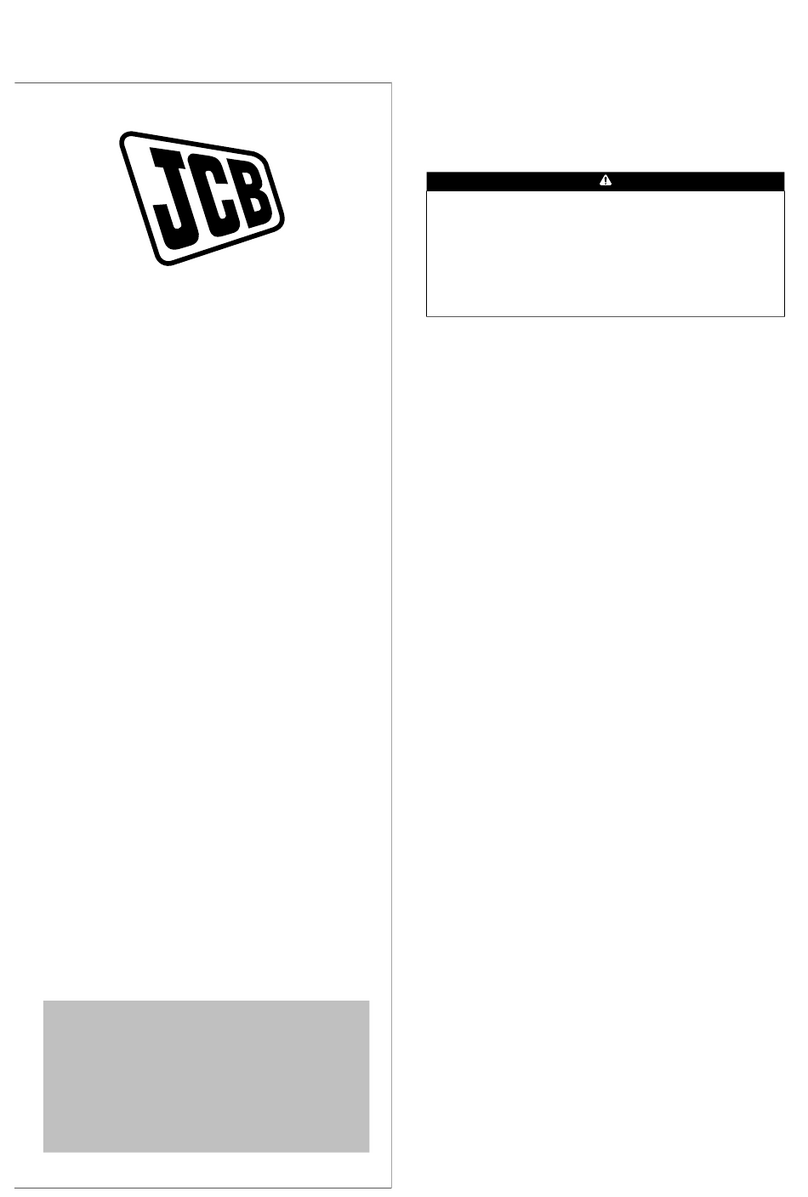6
Fire Prevention
The PT-30 has components that
operate at high temperatures. The
main heat sources are the engine
and the exhaust system. The electri-
cal system, if damaged or improperly
maintained, can also be a source of
heat and sparks. Attachments (brush-
cutters, mowers etc.) can generate
debris that can cause a fire if improp-
erly maintained.
Flammable debris (leaves, straw,
brush cutting debris, etc.) must be
removed from these high temperature
areas regularly. If flammable debris is
allowed to accumulate, a fire may
result posing a risk to the operator
and the machine. A fire can cause
machine damage, severe injury, or
even death. Inspect for and remove
flammable debris often to avoid a fire.
Listed are a set of precautionary
tasks that should be performed daily
or more often as needed. Repair or
replace worn/damaged components
as required to ensure safe operation.
• With the engine off and cool, clean
flammable debris from engine com-
partment, exhaust system, attach-
ments and other areas where there
may be hot or rotating parts.
• Check battery, fuse box, electrical
wiring and connections for damage
or looseness.
• Check fuel lines and hoses for
leaks or damage. Never allow open
flame near fuel or fuel system com-
ponents.
• Check hydraulic lines, hoses and
fittings for damage or leaking fluid.
Never use bare hands to check for
leaks. Pressurized fluid can pene-
trate skin and cause injury or even
death.
FFIIRREEPPRREEVVEENNTTIIOONN
• Do not use ether or any other aerosol
type starting fluid to start the engine.
• Always stop the engine and allow the
machine to cool before adding fuel.
No smoking.
WARNING

